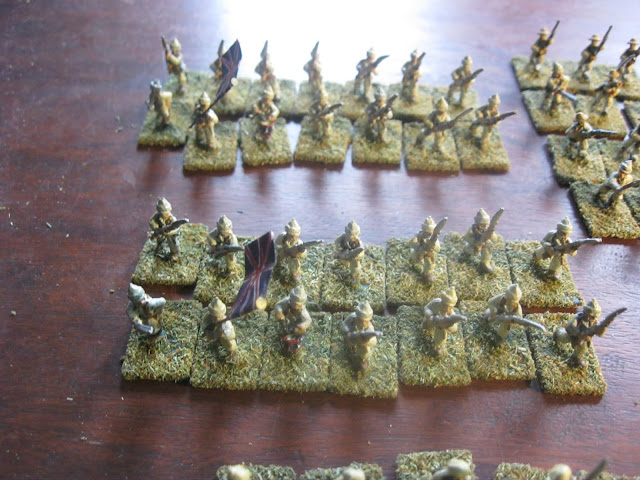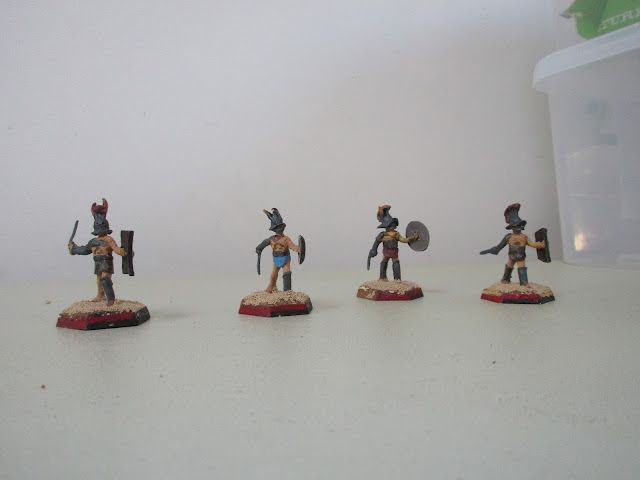On the front lawn of the capital building of the Commonwealth of Massachusetts near the famed Boston Commons sits a statue of a woman. Who was this woman and why did the Massachusetts government choose to honor her in this way? Why, because an earlier version of the Massachusets government had hung her for being a dangerous and disruptive person. And when you hang someone, and feel bad, the only way to make it up is to create a statue of them a couple centuries later.This woman's name was Mary Dyer and she lived and was hung in the 17th Century.
And personally, despite a lot of self-righteous posturing and simplistic explanations of what occured, there actually were some complex issues involved. (Honestly, I lived in the Boston area for three years. I found it a rather smug and self righteous place and the fact that they responded to hanging a woman, essentially because the government considered itself the one true way and she disruptively insisted they weren't, by building a statue to her 150 years or so later, acting as if they were above all things and had now found the one true way again by saying they were above such things, just strikes me as an equally smug and dangerously self-righteous thing to. My opinion is if the government and ruling class of Boston hung someone once, sooner or later they will be tempted to do it again, and for the same reason --that person is very, very bad because he criticized the moral authority of the ruling class of Massachusetts.)
So who was Mary Dyer and what did she do that was so awful and disruptive anyway? What motivated people to consider her to be someone best killed? There's a lot of writing on it
Well, was it because she was a Quaker? And if so, what was it about Quakers that excited the government of Massachusetts so much.
First, the government of Massachusetts at the time was controlled by Puritans. Although both the Puritans and the Quakers were Christian sects that had originated in England, they were very different in their approaches to society, authority, and approach to God.
The Puritans were a rigid sect, with a hierarchical structure, in which the authorities, by virtue of their position and education in such matters, interpreted the Bible and the will of God and set these teachings out for their members, expecting them to be obeyed and followed.
The Quakers, by contrast, were (and still often are) an anarchistic group that believed that each of their members could sense the will of God guiding them from within. Thus a Quaker (or more properly, as they later became known, a member of the Religious Society of Friends) not only had no need of an authority figure when they wished religious guidance, and felt quite comfortable ignoring the authorities in even the most important of things, with their belief that God could guide them from within, they were prone to completely disregard and even contradict the Puritan authorities. They would even go so far as to criticize them publicly. And they would encourage others to do so as well.
And many people of the time considered Quakers to be a dangerous, insane, fringe element, of absolutely no use to the good people of mainstream society. During this time, Quakers were known to do such things as take off all their clothes, enter a Puritan church in mid-service while still completely undressed, and then, without missing a beat, having become the focus of attention instead of the designated preacher, lecture all present, including the preacher, on the errors of their ways and the problems with Puritan theology in general. This was called "going naked for a sign."
(Citations: 1, https://www.jstor.org/stable/41946859?seq=1#page_scan_tab_contents 2. https://www.questia.com/library/journal/1P3-3810400551/naked-quakers-who-were-not-so-naked-seventeenth-century and elsewhere)
In fact, the very term "Quaker" was a slur used because these religious fanatics would tend to became excited and "quake" when they preached or did things like this. And if the act of entering someone else's church, naked, and telling them they were not only praying wrong but their entire society was based on a misinterpretation of the Bible, sounds self destructive, it is important to understand that at this time the "Quakers" (members of what was later named the Religious Society of Friends) believed that the second coming was imminent, Jesus was going to return shortly, and we would all be judged and it was a good idea to get your own house and theological affairs in order shortly as the end was nigh.
Now, for the record, to the best of my knowledge, Mary Dyer never did this (although it's safe to say I had other ancestors who surely must have done so) but this is how members of her sect were viewed by the people who hung her.
So to some extent, the Quaker-Puritan rift grew out of a difference between authoritarian "top-down" Christian teachings and "bottom-up" each man or woman can find guide through their own efforts sort of Christianity as well as just a general fear of disruptive, anarchistic elements that would spread chaos and disorder. (all of which sound like things that, to me at least, the authorities in Boston sill oppose.)
In 1661, Edward Burroughs wrote a book on the subject called "A Declaration of the Sad and Great Persecution and Martyrdom of the People of God, called Quakers, in New-England, for the Worshipping of God." It contains a detailed description of the hanging of Mary Dyer as well as the persecution of other Quakers in this place. The book begins by stating that it is "A DECLARATION Of some part of the S U F F E R I NG S of the People of God (in scorn called QUAKERS) from the Professors in NEW-ENGLAND, Only for the Exercise of their Consciences to the Lord, and Obeying and Confessing to the T RUTH , as in his Light he had discovered it to them." Note the use of the term "Professors" to describe the people who persecuted them, another sign of the "authoritarian-anti-authoritarian" aspect of the disagreements between the two groups. In this context, it's worth pointing out that Harvard, the oldest university in the USA, began as a theological institute to train Preachers in Puritan Massachusetts.
Which brings us to poor Mary Dyer. Yes, she was hung, but not only had she been told by the authorities in Massachusetts to get out and stay out (Rhode Island being the normal destination for these sorts of troublemakers and intellectual non-conformists of all types and stripes of the time), but she had defied this order and returned, repeatedly.
In their opinion, she, and people like her, had to be exiled as they did things like encourage people to have small, private Bible study groups where they read and discussed the Bible among each other instead of waiting for an educated, authority figure to explain it to them as was intended. Now, for the record, this was in 1637, a few years before Mary Dyer converted to Quakerism, but it was nevertheless a dangerous act to study the Bible on one's own and could easily lead to such problems as egalitarianism and anarchy.
Not only did the authorities tell her to stop, but to show the other residents of Massachusetts how wrong and evil her actions were, 1n 1638, they dug up her still born infant (born and died on October 17, 1637) and told people what they had found. Governor Winthrop himself declared the baby to be: "it was of ordinary bigness; it had a face, but no head, and the ears stood upon the shoulders and were like an ape’s; it had no forehead, but over the eyes four horns, hard and sharp; two of them were above one inch long, the other two shorter; the eyes standing out, and the mouth also; the nose hooked upward; all over the breast and back full of sharp pricks and scales, like a thornback [i.e., a skate or ray], the navel and all the belly, with the distinction of the sex, were where the back should be, and the back and hips before, where the belly should have been; behind, between the shoulders, it had two mouths, and in each of them a piece of red flesh sticking out; it had arms and legs as other children; but, instead of toes, it had on each foot three claws, like a young fowl, with sharp talons.”
You think she'd get the message that she just wasn't wanted in Massachusetts. On the other hand, apparently, even though it was the governor who did it, taking a woman and telling people that her still-born child had been a demonic creature, no doubt do to his mother's heretical views, as demonstrated by trying to encourage independent Bible study groups, somehow failed to convince Mary Dyer that the authorities were terribly Christian and following the path of Christ.
From this time onward, Mary Dyer sought religious truth and soon converted to being a Quaker. She then spent the next 23 years traveling New England, with a side trip to the old country of (old) England, meeting with Quakers, defying bans on the presence of Quakers, preaching publicly, even where it was forbidden, and was often arrested along the way. On June 1, 1660, the authorities in Boston became sick of her antics and hung her because she just wouldn't stop (which sounds like the way a lot of my Quaker relatives act when they think they are right, me too actually. Go ahead, hang us, we don't care. We're on a mission from God. No, really, we are. I felt it one day. Honest.)
But it's okay because they built a statue to her later.
For a good biography of Mary Dyer see:
http://www.quakersintheworld.org/quakers-in-action/15/Mary-Dyer
Edward Burrough in A Declaration of the Sad and Great Persecution and Martyrdom of the People of God, called Quakers, in New-England, for the Worshipping of God (1661)
https://digitalcommons.unl.edu/cgi/viewcontent.cgi?referer=https://www.google.com/&httpsredir=1&article=1023&context=etas











































